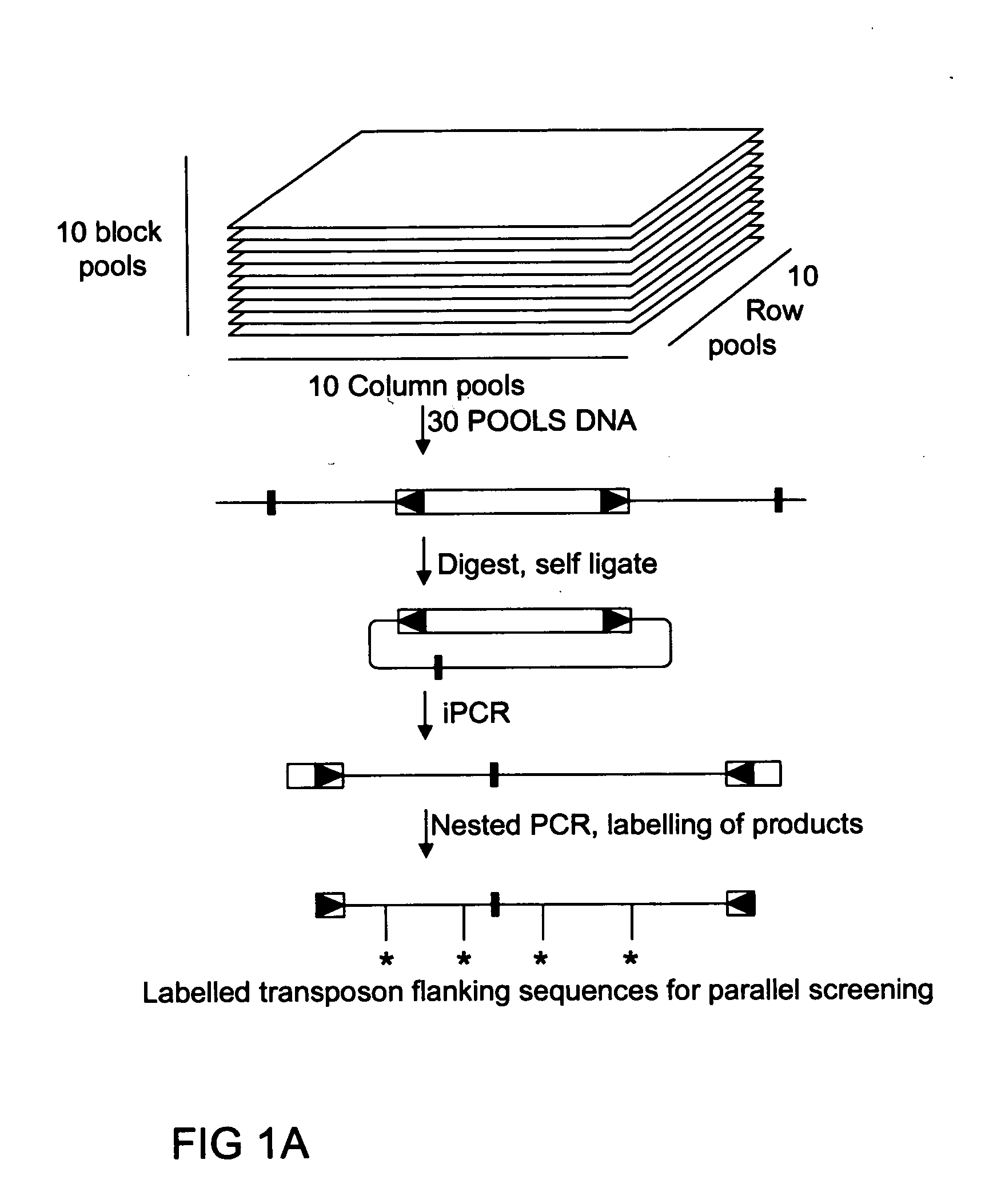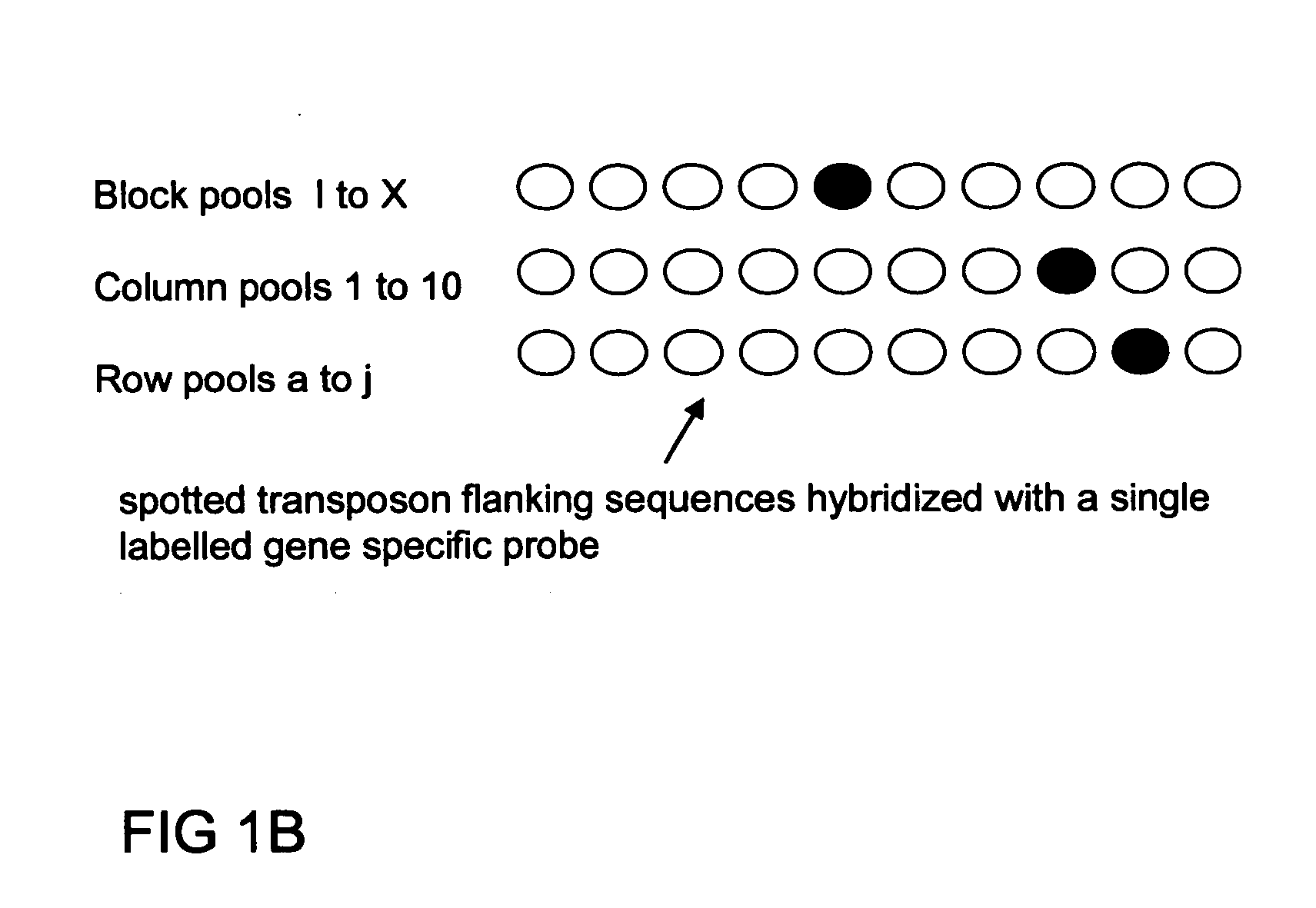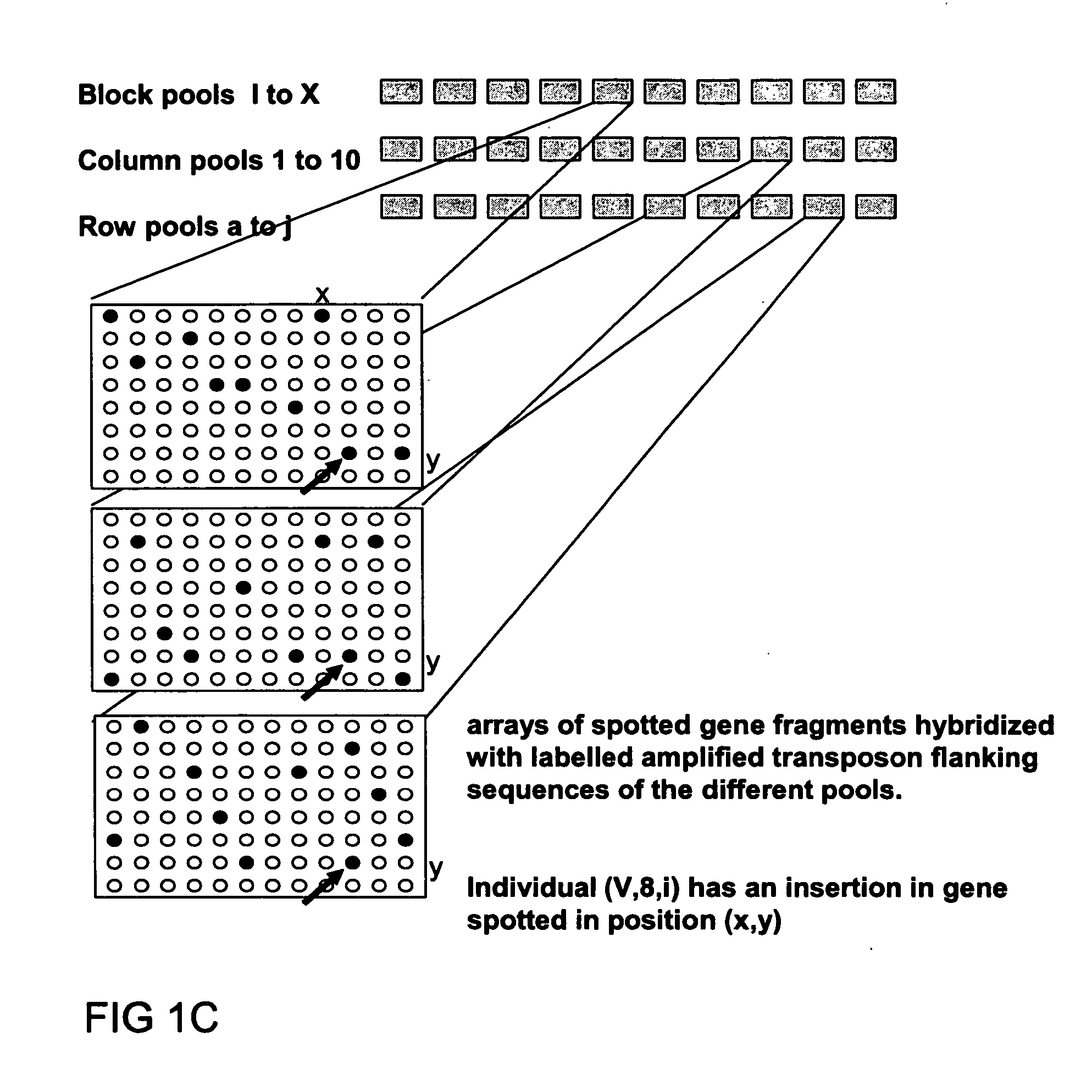Method of parallel screening for insertion mutants and a kit to perform this method
a technology of insertion mutants and kits, which is applied in the field of parallel screening for insertion mutants and a kit to perform this method, can solve problems such as background hybridization, and achieve the effect of increasing the efficiency of screening
- Summary
- Abstract
- Description
- Claims
- Application Information
AI Technical Summary
Benefits of technology
Problems solved by technology
Method used
Image
Examples
examples
[0085] Method for Determination of Detection Limits
[0086] Genomic DNA of the heterozygous PhAp2A insertion mutant was diluted with increasing amounts of wild type DNA (ranging from 1 / 1 to 1 / 256 insertion mutant / wild type DNA). 10 μg of each DNA mix was digested in 100 μl 1× New England Biolabs buffer 4 with the tetracutter enzyme BfaI, which does not cut within the 284 bp dTph1 element. After complete digestion, the enzyme was heat inactivated and the mixture was phenol:chloroform extracted, precipitated and dissolved in dd H2O. 2 μg of DNA was ligated ON at 14° C. in 400 μl 1×T4 ligation buffer in the presence of 2.5 units of T4 DNA ligase. The ligation mixture was extracted with phenol:chloroform, with chloroform and precipitated in the presence of 20 μg of calf thymus tRNA, washed and dried. The vacuum dried pellet was re-suspended in 30 μl of dd H2O. 5 μl of the self-ligated fragments were used in the iPCR reaction with the outward transposon inverted repeat primer (TIR), consi...
PUM
| Property | Measurement | Unit |
|---|---|---|
| Dimension | aaaaa | aaaaa |
Abstract
Description
Claims
Application Information
 Login to View More
Login to View More - R&D
- Intellectual Property
- Life Sciences
- Materials
- Tech Scout
- Unparalleled Data Quality
- Higher Quality Content
- 60% Fewer Hallucinations
Browse by: Latest US Patents, China's latest patents, Technical Efficacy Thesaurus, Application Domain, Technology Topic, Popular Technical Reports.
© 2025 PatSnap. All rights reserved.Legal|Privacy policy|Modern Slavery Act Transparency Statement|Sitemap|About US| Contact US: help@patsnap.com



